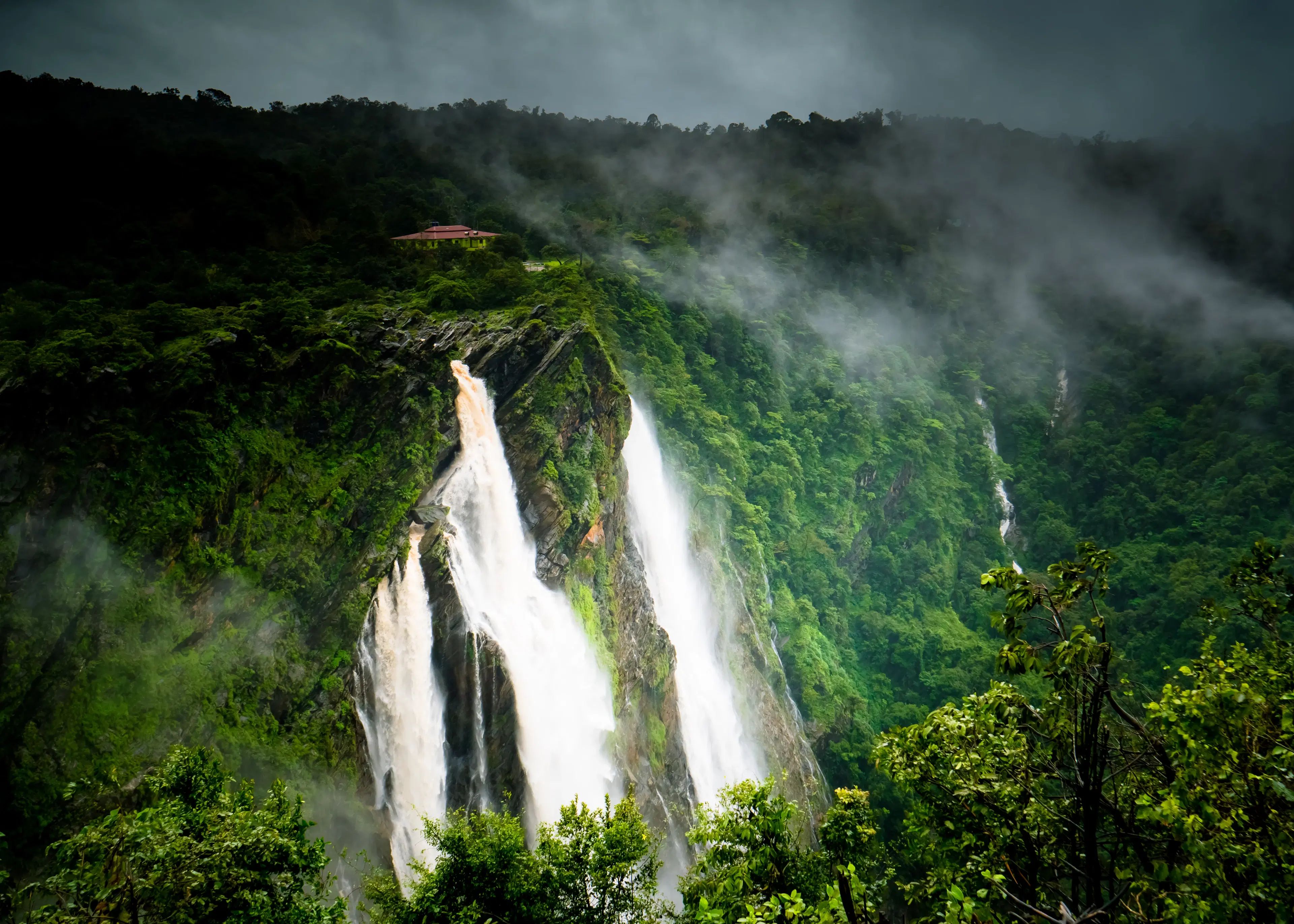
Flights
•03 min read

Mawsynram, a quaint village tucked away in the Khasi Hills of Meghalaya, dazzles the world as the wettest place on Earth. This post unravels the mystery behind its record-breaking rainfall and invites you to journey through the natural forces and cultural adaptations that define this unique destination.
Perched amidst the lush Khasi Hills, Mawsynram is not only picturesque but also home to a phenomenon that mesmerizes meteorologists and travelers alike. The village’s geographic position exposes it to a unique climate where the interplay of mountains and monsoon winds creates heavy rainfall. One key process is orographic rainfall: as moist air is forced upward by the hills, it cools down quickly and releases copious amounts of rain. This natural mechanism is a major contributor to Mawsynram's impressive reputation.
The secret behind the extraordinary rainfall in Mawsynram lies in the dynamic interaction between powerful monsoon winds and the topography of the region. When moisture-rich winds clashing against the steep terrain are forced upwards, they not only cool but also release an unparalleled volume of precipitation. This combination of factors places Mawsynram in a league of its own, outshining other high-rainfall areas around the globe.
Mawsynram is renowned for its historic rainfall records, with annual precipitation reaching staggering heights of around 11,871 mm. Over the decades, this small village has made headlines with its torrential downpours and consistently high statistics—features that distinctly set it apart from even its neighbor, Cherrapunji. The impressive numbers not only highlight nature’s raw power but also invite curious travelers and scientists to witness this spectacle firsthand.
A closer look at the seasonal patterns reveals that Mawsynram’s rainy season stretches over several months, with significant intensity during the peak monsoon period. Although the skies frequently open up, it is not accurate to say that it rains every single day. Instead, periods of dryness intermingle with relentless downpours, crafting a climate that is as varied as it is dramatic.

While Mawsynram and Cherrapunji may share the spotlight for extreme rainfall, they are indeed two distinct villages in Meghalaya. Over time, Mawsynram has climbed the ranks to become the wettest place on Earth, surpassing Cherrapunji in annual precipitation. The change in titles underscores the evolving natural dynamics in the region and highlights the importance of geographical and meteorological studies in these areas.
When comparing the two, one notices differences that go beyond raw numbers. Mawsynram experiences a wetter and slightly cooler climate due to its higher rainfall accumulation, whereas Cherrapunji, with its own set of distinctive weather patterns, offers a different experience of nature’s bounty. These regional variations extend into their tourism appeal, where each destination provides a unique canvas of natural beauty and ecological wonder.
The residents of Mawsynram have learned to coexist with their relentless weather. Daily life in this wettest village in India is a rhythmic dance with nature that includes sturdy infrastructure, ingeniously designed homes, and a lifestyle that embraces both the blessings and challenges brought by heavy rains. Local traditions and adaptive practices make living in such a climate a vibrant, community-driven affair.
For travelers, Mawsynram presents a rare opportunity to experience one of nature’s most interesting spectacles. Beyond the impressive rainfall record, key attractions include the mystifying Mawjymbuin Cave, cascading waterfalls, and scenic trails that let you savor the refreshing monsoon ambiance. The best time to visit is during the early monsoon when the landscape is lush, and the air is filled with a distinctive earthy fragrance. Visitors are advised to pack accordingly and plan for intermittent showers as part of the experience, crafted perfectly by the cosmic play of the Meghalaya monsoon.

Did you know? Mawsynram’s record-breaking rainfall is caused by a combination of its unique geography and the monsoon winds. The Khasi Hills act as a barrier, forcing moisture-laden winds to rise and cool, resulting in torrential rains. This phenomenon, known as orographic rainfall, is the key to Mawsynram’s extraordinary climate.
Mawsynram’s location in the Khasi Hills and its exposure to monsoon winds create the ideal conditions for orographic rainfall, leading to record-breaking precipitation.
Mawsynram holds the title of the wettest place on Earth due to its annual rainfall exceeding 11,000 mm.
No, they are distinct villages. While both experience heavy rainfall, Mawsynram has surpassed Cherrapunji in annual precipitation.
Though the rainy season is intense, it does not rain every day; intermittent dry spells occur even during the monsoon.
Mawsynram’s status as the wettest place on Earth is a fascinating blend of natural forces and local resilience. The interplay of geography and the Meghalaya monsoon not only defines its climate but also offers a unique allure for travelers and nature enthusiasts. By delving into the rainfall records, comparing it with neighboring regions, and understanding local adaptations, readers can appreciate the magnetic charm of this extraordinary village.